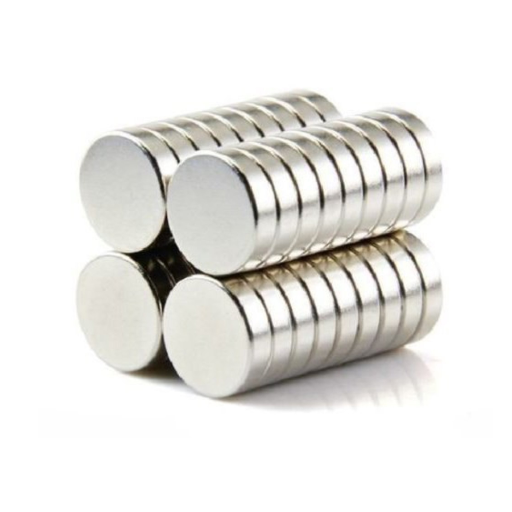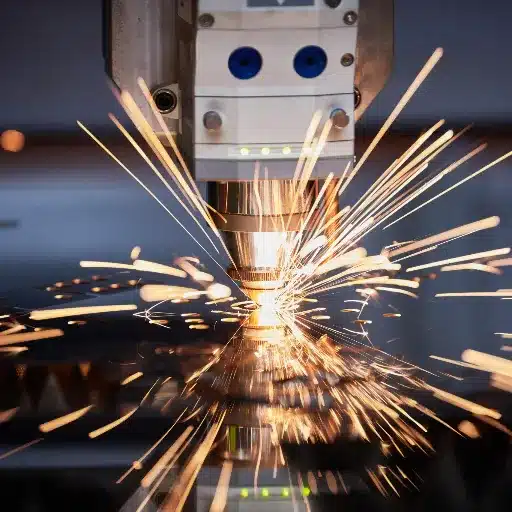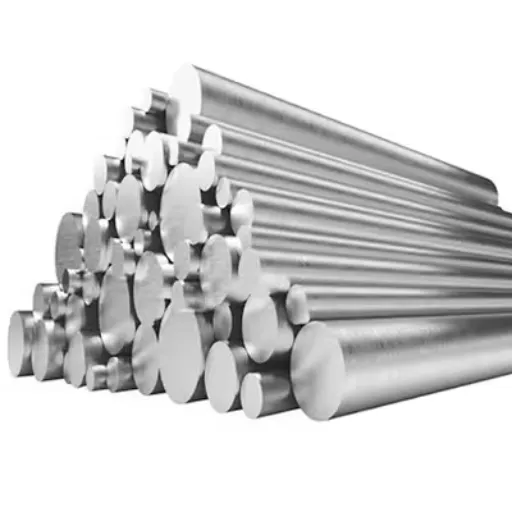The main features of stainless steel are its durability, resistance to corrosion, and wide range of applications. One of the commonly used grades of stainless steel is 304 grade. But one question arises while discussing the properties of this alloy: “Is 304 stainless steel magnetic?” In this article, we will look at the factors that construct the magnetic traits of the alloy, including its composition, the principles of its manufacturing processes, and other characteristics that affect magnetism. We will also study some of the practical scenarios where the presence or absence of magnetic traits of 304 stainless tools is significantly important, hence helping the readers understand the application of this alloy beyond its surface. So keep reading to learn more about 304 stainless steel and get an answer to all your questions.
What Makes Stainless Steel Magnetic?

The magnetic characteristics of stainless steel depend notably on its microstructure, which includes its chemical composition and heat treatment. 304 stainless steel is austenitic, meaning its crystal structure is face-centered cubic (FCC). This structure makes it mostly nonmagnetic. However, some regions of the material might transform into martensite, a structure that is body-centered cubic (BCC) or body-centered tetragonal (BCT) and is magnetic, due to cold working or deformation. Therefore, while it is true that annealed 304 stainless steel is non-magnetic, it becomes slightly magnetic after severe cold-working.
Understanding the Magnetic Properties of 304 Stainless Steel
As far as the magnetic properties of 304 stainless steel are concerned, here is what I understand. The material is mostly non-magnetic because it has an austenitic structure with face-centered cubic (FCC) crystal form. But, if 304 stainless steel is cold worked or significantly deformed, a change in the microstructure takes place, forming martensite, which possesses a body-centered cubic (BCC) or body-centered tetragonal (BCT) structure, making those areas slightly magnetic. So, while it is true that annealed 304 stainless steel is non-magnetic, the process of cold working renders these steels partially magnetic.
The Role of Austenitic Stainless Steel in Magnetism
The most commonly used grades, 304 and 316, are austenitic stainless steel, which is normally non-magnetic. It does not possess any magnetic properties because its face-centered cubic (FCC) crystal structure is stable at room temperature. However, some processes, such as cold working or extensive deformation, can change some of the structure into martensite, which is the magnetic phase that can be either body-centered cubic (BCC) or body-centered tetragonal (BCT) structure.
Some Key Technical Parameters Include
- Magnetism in the Annealed State
As received (annealed) austenitic stainless steel does not show magnetic properties, and its magnetic permeability is close to 1.
- Cold Working and Martensitic Transformation
Magnetic attributes can be heightened due to cold working below the inflection temperature, which causes a martensitic phase change.
The amount of magnetic transformation relies on the amount of straining done on the material and the composition of the material itself.
- Temperature Effect
Most austenitic grades will require higher temperatures, around 700 degrees Celsius, to revert the martensitic phase to FCC, thus becoming less magnetic.
- Impact of Alloying Elements
Nickel content (in 304 stainless steel, normally 8-10.5%): Raises the stability of the FCC form.
Also decreases the likelihood of martensite formation, the most manganese and nitrogen added.
- Cold Worked Magnetic Properties
The value of magnetic permeability tends to have a slight increase (usually 1.05-1.2) based on the degree of deformation the material goes through.
Grasping these parameters helps engineers forecast and manage the magnetic response of austenitic stainless steel, tailored to particular needs, and functions suitably in both structural and magnetically sensitive settings.
How the Crystal Structure Affects Magnetic Behavior
The non-magnetic properties of austenitic stainless steel can be attributed to its crystal structure; it has a face-centered cubic (FCC) unit cell, which makes the alignment of domains difficult. This results in low magnetic permeability. The material may become partially transformed to martensite, which is body-centered cubic (BCC) or body-centered tetragonal (BCT), due to cold working or deformation. The converted phases are ferromagnetic and increase magnetic permeability.
As an example, austenitic stainless steel is estimated to possess an initial magnetic permeability of approximately 1.0. With sufficient cold working deformation, this may reach 1.05 to 1.2. The transition to martensite is assumed to start from 20-40% deformation, with further increase in strain providing enhanced magnetic response. Furthermore, some specific grades, such as 304 stainless steel,l are more likely to transform than 316 stainless steel because of the alloy composition difference and the stability of the austenitic phase.
Further, tailoring this material for use in magnet-sensitive applications or environments with carefully regulated magnetism requires understanding the impact of freezing restructuring techniques, such as cold working or machining, on the FCC structure and the resulting phase shift induced magnetism.
How Do Magnetic and Non-Magnetic Stainless Steel Differ?

The main difference between magnetic and non-magnetic stainless steel is their alloy composition as well as their crystal structure. For instance, ferritic and martensitic grades are magnetic stainless steels because of their body-centered cubic (BCC) structure that enables the magnetic domains to orient themselves and show magnetism. Non-magnetic stainless steels include austenitic grades whose standard structure is face-centered cubic (FCC) and lacks magnetic alignment. With that being said, cold working or phase transformation can induce magnetism within austenitic grades. The selection of stainless steel as either magnetic or non-magnetic depends on specific application requirements like formability, corrosion resistance, or avoidance of magnetic impact.
Comparing 304 and 316 Stainless Steel in Terms of Magnetism
Stainless steels 304 and 316 share the same magnetic characteristics and fall in the same family of austenitic stainless steels, which makes them predominantly non-magnetic when annealed because of their face-centered cubic (FCC) crystalline structure. They can, however, behave differently under certain circumstances:
- 304 Stainless Steel
Base Magnetism: Non-magnetic upon full annealing
Work Hardening: Cold working (i.e., bending, shaping, or machining) will convert at least some austenite into a magnetic phase, martensite, causing some weak magnetism in 304.
Composition:
- Chromium (Cr): approximately 18 – 20%
- Nickel (Ni): approximately 8 – 10.5% (helps retain austenitic stabilization)
Key Take Away: With sustained austenite retention, minor magnetic characteristics can be observed when cold worked along to an impressive degree of corrosion resistance.
- 316 Stainless Steel
Base Magnetism: Non-magnetic upon full annealing, like the above-mentioned 316.
Work Hardening: Cold work can also cause some weak magnetism to form around the 316, albeit less than 304, due to the higher amounts of Nickel and Molybdenum, which stabilize the austenitic structure.
Composition:
- Chromium (Cr): approximately 16 – 18%
- Nickel (Ni): approximately 10 – 14%
- Molybdenum (Mo): approximately 2 – 3% (could also state that it enhances the corrosion resistance whilst reducing magnetism even when cold worked)
Key Take Away: 316 is rather unlike to be magnetic under similar situations compared to 304, making it more suitable in cases requiring higher resistance to corrosion and lower magnetism.
Summary
Both 304 and 316 grades alloys are non-magnetic, but cold working tends to introduce some magnetism in both, especially 304. For applications sensitive to magnetism, completely annealed material is preferred. Additionally, 316 contains more molybdenum and nickel which increases the alloys corrosion resistance and decreases magnetism.
The Influence of Ferritic Stainless Steels on Magnetism
Due to their body-centered cubic (BCC) crystal structure, ferritic stainless steels are considered to be magnets. Ferritic grades have more iron as compared to nickel, which contributes to their natural magnetism. Heavy industrial applications, such as tools for solving engineering problems, make use of these magnets because they are consistent. On the downside, ferritic stainless steels don’t perform as well when exposed to corrosion when compared to austenitic grades.
Exploring Martensitic Stainless Steel and Its Magnetic Properties
The primary reason martensitic stainless steels are magnetic is due to their high iron content and body-centered cubic (BCC) crystal structure. My research indicates these steels undergo hardening and tempering processes, which further enhance their strength and wear resistance. In comparison to other stainless steel types, however, martensitic stainless steels offer only moderate corrosion resistance due to their chromium content. This makes martensitic stainless steel ideal for applications where hardness and magnetism are more critical than corrosion resistance, such as in cutting tools and turbine blades.
Can 304 Stainless Steel Become Magnetic?

Magnetic 304 stainless steel is produced under specific conditions. It is primarily non-magnetic in its annealed state, but cold working or deformation alters its crystal structure, inducing magnetism. This is the result of the transformation of some of the austenitic phase into martensite, a magnetic phase. Thus, processes such as bending, stamping, or machining gave 304 stainless steel partially magnetic properties.
The Impact of Magnetic Fields on 304 Stainless
In its annealed state, 304 stainless steel is a non-magnetic material, but I believe it does not lose this characteristic under magnetic field exposure. It appears that, in the case of pre-cold-worked steel, the regions with martensitic structures might respond to magnetic fields. Usually, the effect of a magnetic field is small and only acts on these changed forms. Although 304 stainless undergoes some degree of magnetism due to mechanical working, it cannot be considered magnetic in response to most magnetic fields.
Does Welding Affect the Magnetic Properties?
The 304 stainless steel can indeed be affected magnetically by the process of welding. The reason is that the steel microstructure, especially the heat-affected zone (HAZ), changes due to the intense welding temperatures (Welding). The changes of Austenite to either ferrite or martensite might take place, and these phases exhibit different magnetic behaviors.
The cooling rate and heat input during welding a factor that greatly affects the amount of ferrite and creation of martensite. Greater heat input, together with lower cooling rates, will likely stabilize austenite, which results in reduced magnetic properties. Increased cooling, on the other hand, promotes the creation of more martensite structures, which results in an elevation in the localized portion of the magnetism. Other technical factors that need to be considered are:
- The current and voltage of the welder: too much heat given might weaken the structure of the austenite.
- Cooling rate: An Increased rate of cooling improves martensite transformation
- Ferrite number (FN): FN values range between 3 to 10, becoming more common when a balance between the two extremes is sought to lessen cracks and mute the magnetic effects.
Restorative processes done after welding, like annealing, can assist in changing the dominant austenitic layer to magna free layer. It should be noted, though, that the welded parts will still have some magnetic properties due to some remains of martensite or ferrite.
Understanding Partially Magnetic Behavior in 304 Stainless
The microstructure of 304 stainless steel gives it a slight magnetic character, which is partially magnetic. While mostly austenitic and non – magnetic in its annealed state, 304 stainless steel could exhibit slight magnetism in certain areas due to processes like cold working or welding. These processes could lead to the formation of magnetic phases such as Martensite or Ferrite. Thus, some magnetism is observable especially after the processing is mechanical or thermal in nature.
Why Is the Type of Stainless Steel Important in Magnetism?

The stainless steel type governs the magnetic property due to its composition, along with the microstructure. Austenitic stainless steels like 304 and 316 have non-magnetic properties while being in the annealed state because of the high concentration of nickel and chrome present in them, which stabilizes the austenitic phase. Unlike them, ferritic and martensitic stainless steels such as 430 and 410 show more magnetism due to the presence of ferromagnetism in their crystal structure. The selection of the type greatly affects the magnetism and range of applications for the alloy, depending on the specific purpose intended.
The Importance of Stainless Steel Grades in Magnetic Applications
As far as the steel grades for magnetic uses are concerned, I think about how their composition impacts performance. Austenitic stainless steels, such as 304 or 316, are mostly non-magnetic due to their high nickel and chromium content. These steels are perfect for use in situations where corrosion resistance is very important, but magnetism is not. For applications that require stronger magnetic behavior, I consider ferritic or martensitic grades like 430 or 410, known for having good strength and structural integrity along with responsiveness to magnetism. Selecting the right grade will always rely on the balance between corrosion resistance, mechanical properties, and the amount of magnetism needed for the specific application.
How Corrosion Resistance Relates to Magnetism
In my experience dealing with magnets and corrosion, stainless steel grades with higher amounts of chromium and nickel, such as austenitic types, focus on corrosion resistance but have no or negligible magnetism owing to their atomic structure. On the contrary, ferritic and martensitic grades that are more magnetic are weaker in resistance to corrosion because they have lower amounts of chromium and little or no nickel. The relationship, so to speak, is a trade-off. In any situation, I focus on the requirements to see which of the two is more crucial in any given task, magnetic properties or corrosion resistance.
Choosing the Right Grade of Stainless for Magnetic Uses
When choosing a grade of stainless steel for magnetism, it is important to consider magnetic characteristics alongside environmental properties such as susceptibility towards corrosion. Generally, magnetic stainless steels are of ferritic or martensitic grades because their atomic structure enables them to be easily magnetized. Some common ferritic grades, such as 409 and 430 stainless steels, possess stainless steels have very high magnetic permeability with moderate resistance to corrosion, which makes them fit for use in automotive exhaust and household appliances. On the other hand, martensitic grades like 410 and 420 have much greater strength and hardness but incur greater corrosion resistance. These are commonly found in tools and fasteners that require magnetism and withstand mechanical stress.
Key technical parameters to consider include:
- Magnetic Permeability: μ-Ferritic stainless steels have a relative permeability of the order of a hundred to five hundred, depending on the grade and heat treatment applied to them.
- Coercitivity: Hc- the lower the abruptness of the increase in magnetization is needed to change magnetic induction intensity, the better “magnetic softness” becomes. These are preferred in the cores of transformers. Ferritic grades have lower coercivity compared to other metals.
- Yield strength and hardness: 410 martensitic grades reach yield strength in the vicinity of 240 MPa and show a Rockwell C hardness value of 40 to 50 after tempering.
- Corrosion Resistance: The minimum chromium content must be 10.5% to ensure some degree of corrosion resistance. For even greater resistance, grades such as 430 with 16-18% chromium are better.
In the end, the selection of grade should meet the needs of the application. Ferritic grades perform better in scenarios that need average corrosion resistance and a stronger magnetic response, while martensitic grades are best in highly magnetic and robust conditions. Balancing these trade-offs helps achieve the best performance out of the material relative to its intended purpose.
Is Magnetic Stainless Steel Useful in Industry?

Magnetic stainless steel, as stainless steel with unique features and ferritic magnetism, is greatly helpful for industries and applicable in various fields. Magnetic and ferritic stainless steels are types of stainless steel that are magnetic. These types are readily used in industrial tools, appliances, motor vehicle parts, and building appliances. Moreover, the magnetic property allows them to be placed into greater use in electric and electromagnetic machinery, enabling multifunctional applications in different industries.
Applications of Magnetic Separators in Manufacturing
In the course of a mechanical process, a powder is obtained. Magnetic impurities or particles in ferrous form that stem from the non-metal constituents are bound in devices that solely serve this purpose, magnetic separators. These devices serve a far-end purpose of ensuring that the end product is potable.
Key Applications and Technical Parameters:
- Food Processing
- Reason: In food processing, metal contaminants must be removed to follow safety policies and standards.
- Technical Parameters: For fine particle cracking, the magnetic intensity must not be less than 12000 Gauss.
- Pharmaceutical Industry
- Reason: Stripping Fe particles from the raw materials and the finished goods to Foster rigorous purity levels.
- Technical Parameters: Utilization of high-force pull hand rare earth magnets that yield between 10 to 15 lbs of force.
- Chemical Manufacturing
- Reason: Stripping useless ferrous components from chemical processes to ensure the quality of the end product is consistent.
- Technical Parameters: The use of magnetic separators/fixed magnets with steel casing, magnetic field strength of 10000 to 12000 Gauss, is best suited for corrosive environments.
- Recycling
- Reason: To help make the environment more sustainable, it is essential to extract ferrous metals from mixed recycling streams.
- Technical Parameters: Magnetic Overband separators with the capability to process a conveyor flow rate of 400m³/hour.
- Mining and Mineral Processing
- Reason: To refine raw materials and improve yield, extracting magnetic particles from ores is a necessity.
- Technical Parameters: For fine particle cracking, drum magnetic separators are used with adjustable intensity between 3000 and 7000 Gauss.
Magnetic separators can be successfully incorporated into the processes of different industries by aligning them with the necessary technical parameters. This helps, not only improves productivity, but upholds great quality marks too.
The Role of Magnetic Stainless Steel in Construction
Magnetic stainless steel is vital in construction because it combines strength with durability and functionality. Its magnetic characteristics mean it can be used in places where secure fastening or interaction with magnetic tools and systems is needed. Furthermore, it resists corrosion, ensuring reliable performance in different environmental conditions over time. From structural components to fittings, magnetic stainless steel plays an important part in modern construction projects.
Benefits of Using Magnet-Friendly Stainless Steel Alloys
There are significant advantages to using magnet-friendly stainless steel alloys. First, I note their outstanding compatibility with magnetic systems, which is beneficial in the automotive and manufacturing industries where precise positioning, alignment, and secure fastening are critical. Second, these alloys have high rust resistance, maintaining durability when exposed to moisture or harsh environments. Third, their machinability and weldability make these alloys easy to fabricate, leading to reduced costs and increased versatility for many applications.
A few important technical details to keep in mind include:
- Magnetic Permeability (μ): It is usually confirmed that alloys like 400 Series stainless steel have an approximate value between 250-900 bound so that good magnetic interactions can be achieved.
- Yield Strength: Alongside the grade, the measurement ranges around 275 MPa for 430 stainless steel, implying structural support.
- Corrosion Resistance (based on chromium content): Alloys comprising no less than 16-18% chromium show very good capability to protect against oxidation and rusting.
To add on, the combination of magnet-friendly stainless steel alloys is well balanced with flexibility and durability which makes them ideal for different engineering and industrial uses.
References
- Greenwood Magnetics: Magnetic Properties of 304 & 316 Stainless Steel
- MicroGroup: Understanding Magnetic Properties of 304 and 316 Stainless Steel
- Geometrics: Magnetic Properties of Stainless Steel
Frequently Asked Questions (FAQ)
Q: Is 304 stainless steel magnetic?
A: 304 stainless steel is generally considered non-magnetic due to its austenitic crystal structure. However, it can become slightly magnetic when worked or welded due to the transformation of some austenite to martensite.
Q: What causes 304 stainless steel to become magnetic?
A: The magnetic properties of 304 stainless steel can change when it undergoes cold working or welding, which can alter the crystal structure and increase ferrite content, making it partially magnetic.
Q: How does 304 stainless steel compare to 316 in terms of magnetic properties?
A: Both 304 and 316 stainless steels are austenitic and generally non-magnetic. However, similar to 304, 316 stainless steel can also exhibit slight magnetic properties when cold worked or welded.
Q: What types of stainless steel are magnetic?
A: Ferritic and martensitic stainless steels are typically magnetic due to their crystal structures. These types contain higher iron content and fewer nickel elements compared to austenitic stainless steels like 304 and 316, which are generally non-magnetic.
Q: Can a magnet stick to 304 stainless steel?
A: In its annealed state, 304 stainless steel is not magnetic, and a magnet will not stick to it. However, if it has been cold worked or welded, it might exhibit enough magnetic properties for a magnet to have a slight attraction.
Q: What is the role of austenite in the magnetic properties of 304 stainless steel?
A: Austenite is a non-magnetic phase of iron. In 304 stainless steel, the austenitic crystal structure is responsible for its lack of magnetism. Cold working can transform some of the austenite to martensite, which is magnetic.
Q: Are there any methods to reduce the magnetism in 304 stainless steel?
A: To reduce the magnetism in 304 stainless steel, it can be annealed, which involves heating and then cooling it slowly. This process helps revert the crystal structure to its original non-magnetic austenitic state.
Q: What is the difference between ferritic and austenitic stainless steel in terms of magnetic properties?
A: Ferritic stainless steels are magnetic because they have a ferrite crystal structure. In contrast, austenitic stainless steels, like 304 and 316, are generally non-magnetic due to their austenite crystal structure, unless cold worked.
Q: Why do some stainless steels exhibit both magnetic and non-magnetic properties?
A: Some stainless steels can exhibit both magnetic and non-magnetic properties depending on their composition and treatment. The presence of different phases, such as austenite and ferrite, can influence the overall magnetic behavior of the alloy.







